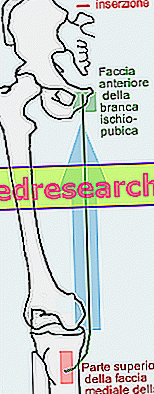Edited by Antonio Sellaroli
The maximal force, by definition, is "the highest force that the neuromuscular system is able to express with voluntary muscle contraction".

The maximum strength can be measured by:
- Dynamic stress (the search for the maximum load, 1RM, real or theoretical)
- Static stress (isometric contraction which, through the use of a dynamometer, allows to evaluate the force applied against an immovable resistance). This measurement must be repeated in multiple angles, as it is a dependent angle.
By maximum load (1RM) we mean that load that can only be raised once. It can be evaluated by:
- Direct method (search for progressive attempts of the maximum load that can be lifted only once)
- Indirect method (search for the maximum number of repetitions possible with a submaximal load)
To perform a test using the direct method, after an accurate warm-up some series of approach to the maximum load are carried out, performing a single repetition per series and paying attention to intensity and recovery (in order not to arrive already tired to the maximum test). The attempt to raise the ceiling must be carried out with the supervision of a partner, preferably two; the advice is not to carry out the maximal lifting more than three times during the same test, and to distance the attempts with pauses of 5-8 minutes; this to avoid the fatigue of previous attempts. The load that you will be able to lift for one and only once represents your 1RM or 100% of the strength you are able to express for that particular exercise. The advantage of this method is certainly the truthfulness of the result, provided that the test is well done; the risks, on the other hand, lie above all in the danger of accidents due to the use of very high loads.
In the indirect method test, after performing a certain maximum number of repetitions with a given submaximal load, the theoretical maximum force is calculated by applying specific formulas, or by using specific tables; from this it can be deduced that the closer the load used approaches the ceiling (eg 80%), the lower the margin of error. The number of repetitions performed will be determined by the prevailing type of muscle fibers present in the muscle; the following results can therefore be found:
- repetitions between 2 and 6: muscular composition predominantly of white fibers (FTb), typically glycolytic, which prefer anaerobic conditions;
- repetitions between 6 and 12: muscular composition predominantly of intermediate fibers (FTa) with glycolytic-oxidative metabolism;
- repetitions greater than 12: muscular composition predominantly of red fibers (St), typically oxidative, which prefer aerobiosis conditions.
The equations used for the indirect method are:
- the Brzycky equation
- the Epley equation
- the table by Maurice & Rydin
The Brzycky equation allows us to estimate the theoretical maximum load as a function of the number of submaximal repetitions performed:
- theoretical maximum load = lifted load / 1.0278 - (0.0278 x No. of repetitions performed)
| Example bench press: | theoretical maximum load = 80 kg / 1.0278 - (0.0278 x 3) |
| theoretical maximum load = 80 kg / 1.0278 - 0.0834 | |
| theoretical maximum load = 80 kg / 0.9444 | |
| theoretical maximum load = 84.7 kg |
You can then use this data to decide which job percentage to set the training program.
The Epley equation allows us to estimate the theoretical maximum load according to the number of submassimal repetitions performed:
- % 1RM = 1/1 + (0.0333 x repetitions performed)
| Example bench press: | % 1RM = 1/1 + (0.0333 x 3) |
| % 1RM = 1/1 + 0.0999 | |
| % 1RM = 1 / 1.0999 | |
| % 1RM = 90% |
Completing 3 submaximal repetitions indicates that we are working approximately 90% of the 1RM.
The table Maurice & Rydin allows both to derive the maximum load according to the repetitions performed, and to calculate a submaximal workload and relative repetitions that can be performed when the maximum load is known.

Multiply the load used by the coefficient that intersects the number of repetitions performed (vertical column) with the number of desired repetitions (horizontal column)
Example Bench press: I do 6 repetitions with 60 kg, I want to know the load to be used to make a single repetition, the coefficient is 1.16 so the load to be used will be 69.6 kg (60 kg x 1.16).
You now have the means to calculate your 1RM. Knowing this data will allow you to structure training programs in which the load to be used will not be given by an approximate number, but by a numerical datum resulting from the execution of an objective and reliable test.



